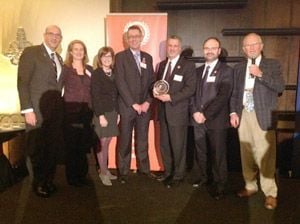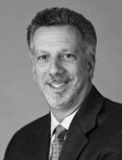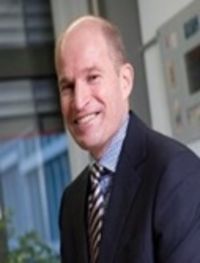Interview with CEO Gene Saragnese
HealthManagement caught up with Gene Saragnese, Executive Vice President and Chief Executive Officer, Imaging Systems, at the Best in KLAS awards evening, where Philips was recognised as Overall Performance Leader in Imaging Equipment.
A few years ago most KLAS winners were smaller companies with a close link to the clients. What did Philips do and improve on to have such outstanding success?
One of the things that comes out through market research on Philips is trust. Behind that is longstanding relationships. We are a company that values relationships and the concept of standing behind our products - you don’t always have things that go perfectly right, but we are there when there are issues. It really comes down to people and the level of intimacy that we have with our customers. We also worked really hard around liability and service delivery, because those things are extraordinarily important. It's the combination of all those elements – the hardware experience, the usability of product, the human experience, the interactions with Philips people - that I think really does matter.
Where do you see the core strengths of Philips?
There are two – people and innovation. It's in the brand promise – innovation and you - it’s an incredibly innovative company clinically and technologically. The second element is people.

Winning the overall KLAS Award, what does this mean to you personally?
It means a lot to me as an individual. I joined the Philips family six years ago, and we set a course to drive value and reliability and quality of the products and to innovate around the things that our customers needed. This award comes right from our customers and there is nothing that is of greater value to me personally.
What are your hopes for 2015?
It is easy for me to say that I’d like Philips to have an award for third year in a row, and it’s clearly the goal, but I believe that the world of healthcare is changing so rapidly today that we will need to continue to evolve and continue to adjust. If you look at Philips, we’ve made a very big bet on healthcare and we are splitting the company, we are moving lighting from the company and really betting on success in HealthTech. And I like this personally, for one big reason – it puts us in the same boat as all of our customers. There is no place to hide, there are no other businesses, it is all about winning in health technology and providing the right solutions. So, I think looking forward it’s going to be about more crisp insight on where the industry is going and where the industry needs to go to continue to provide the care that everyone in the world requires.
We’ve heard during RSNA a lot about the role of radiologists, the role of healthcare. Kent Gale, KLAS President, spoke in his opening speech about the paradigm shift within healthcare. Do you think this would play to the advantage of Philips Healthcare?
Today, in the United States in particular, when you think about fee for service, the model is turning 90 degrees changing, and it is really about understanding the horizontal cost and quality of healthcare delivery. We’ve made a bet Philips to invest along the health continuum in the areas of healthy living, prevention (around lifestyle), in diagnosis (investment in imaging) and in treatment therapies (minimally invasive therapies and monitoring). We have also made big investments in home healthcare. I believe we are very well positioned with this change in the model to more of a horizontal view along the axis of the patient. It puts us in the same position that our customers are in, which is how to deliver better care at lower cost. And it is not about the vertical, it is really about the horizontal – along the axis of the patient. That’s a profound change and what would be different in the years to come is looking at a broader view of healthcare and figuring out how to manage congensive heart failure populations, for example. Is there a CT involved? Maybe. And those things are necessary. Innovating around modalities, around imaging and monitoring is necessary, but not sufficient. You’ve got to put it together around bigger, broader healthcare problems - congestive heart failure, diabetes, to seize the problems that consume a great deal of resources, create a great deal of social burden. What we are doing is shifting our business along this horizontal axis and thinking that way.
If you hadn’t become CEO of Philips Imaging Businesses Healthcare, what other career path would you have chosen?
I am actually an engineer by training and I love innovation. I love innovation and, whatever it would be, it would be around innovating. Even though I am CEO, I still place a huge value on getting to understand how things are going and innovating around the problem.
Do you have a guiding management philosophy?
Do what’s right. In the world we live in there are all kinds of forces that act on you, incentives that act on you and there are decisions you have to make every day. You have to decide where your compass heading is and you have to maintain it.


















